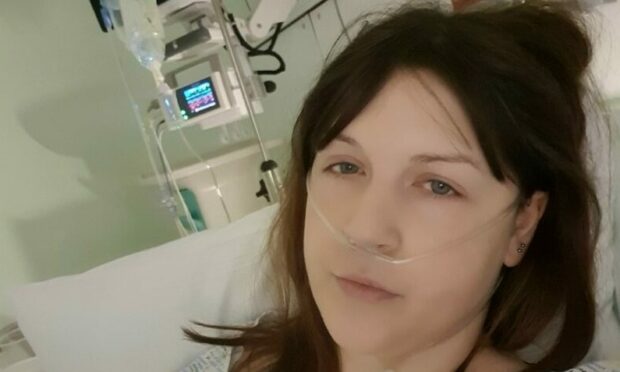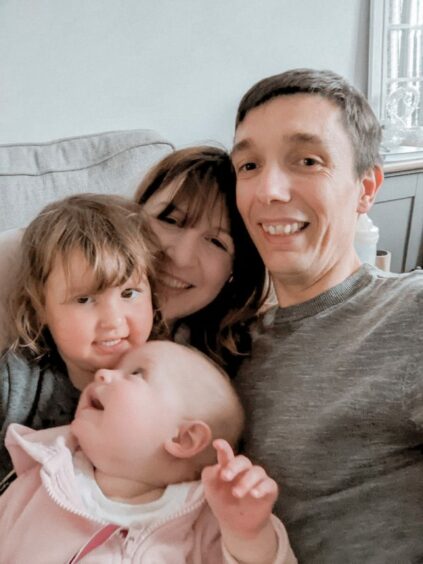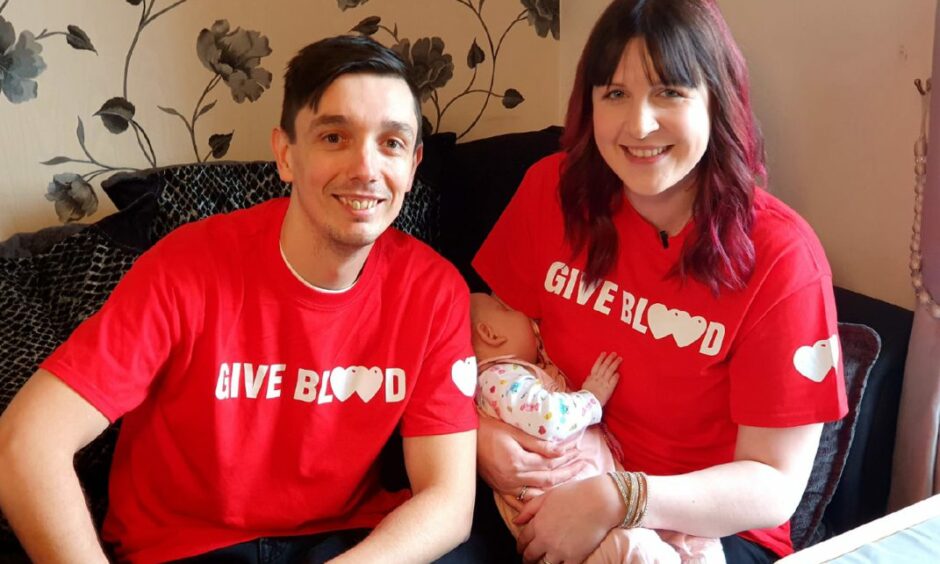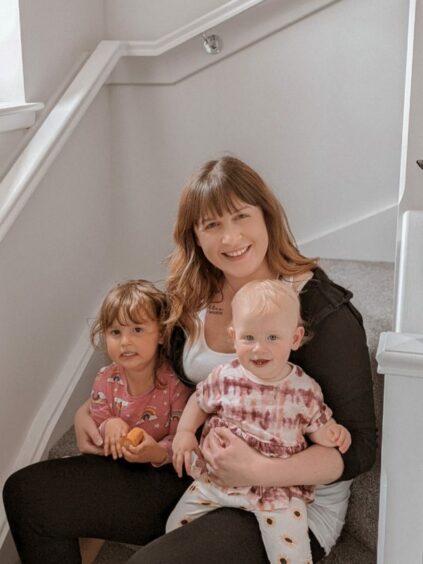A mother says a “completely unnecessary” delay in getting an ambulance when she suffered a massive haemorrhage after childbirth almost cost her life.
Kate MacRae felt she was “being left to die” in agony as 999 call handlers put her husband’s frantic pleas for help in a queue for a call back from a clinician rather than immediately sending an ambulance.
She wants the Scottish Ambulance Service (SAS) to change the way it handles similar incidents to avoid a tragedy.
“To lie there dying, basically, and thinking no one is coming to help me, is a feeling I never want anyone else to feel,” she said.
Severe near miss
Mrs MacRae, 30, from Ardersier, is being supported by a surgeon who operated on her. He says the fact she suffered no permanent physical harm was a “severe near miss”.
Dr Adam Archibald, a consultant in obstetrics and gynaecology at NHS Highland, says there was a “major failure” by the SAS in not correcting the original “dangerous” decision not to send an ambulance.
He says the delay added to the complications experienced by Mrs MacRae, who lost 4.5 litres of blood and needed 12 transfusions to save her life.
The SAS has apologised. It said similar calls will require a face-to-face assessment by a clinician, which Mrs MacRae says does not go far enough.
On July 31 last year, 11 days after the birth of her second daughter Abigail, Mrs MacRae passed two large blood clots and was in extreme pain.
Her husband Mike immediately made the first of four increasingly distressed calls requesting an ambulance.
“When my husband initially dialled 999 they were told I was 11 days post-caesarean section and bleeding uncontrollably.
“They put him in a queue for a call back from a clinician.
“Despite a further three calls by my husband begging for an ambulance, they made him wait over half an hour for a call back from a practitioner who eventually dispatched an ambulance and the PICT (Pre-hospital Immediate Care and Trauma team).
“They arrived 12 minutes later – nearly 50 minutes after the initial phone call.
“By this point my condition had deteriorated greatly. I was struggling to stay conscious and had been in an immense amount of pain during the whole ordeal.
“Mike gave me his wallet to bite on and I almost bit through it.
‘It was traumatic for both of us’
“He thought I was going to die and no one was coming to help us. It was very traumatic for us both.”
She adds: “You expect if you are ever in a life-threatening situation you contact 999 and someone will help you.
“In a phone call we received from SAS after our initial complaint, they blamed ‘resource issues’ for the delay, but we know this wasn’t the case.”
She said the paramedics and PICT team who attended told her they were watching their calls come in and were waiting to be dispatched.
“It’s one thing if an ambulance is not available, but for them to be sitting watching the calls and wondering when they were going to get dispatched was hard to hear.”
Mrs MacRae was given morphine to ease her pain enough to be wheeled into the ambulance.
You expect if you are ever in a life-threatening situation you contact 999 and someone will help you.”
Kate MacRae
The excessive blood loss she experienced led to her developing the potentially life-threatening condition disseminated intravascular coagulation (DIC) which causes abnormal blood clotting throughout the body’s blood vessels.
She spent five days in the high dependency unit and was later treated for Post-Traumatic Stress Disorder (PTSD).
“The whole experience was very traumatic and a great deal of that trauma was caused by the delay in the ambulance.”
Mrs MacRae’s story was highlighted in December as part of a campaign by the Scottish National Blood Transfusion Service
At the time she did not reveal the ambulance issue, but has decided to speak out now.
“My surgeon and I have been pushing the ambulance service to change how they handle potentially serious post-partum calls so that this doesn’t happen to another woman in future.
‘Unwarranted delay’
“We want them to change their policy to make sure calls like this are treated as an emergency.
“This is no reflection on the paramedics, who were incredible, it’s about the call handling procedure.”
Dr Archibald said in a letter to the SAS the “inappropriate” delay in dispatching an ambulance and response to further calls for help caused “huge distress” to Mrs MacRae and contributed significantly to her PTSD.
He said the case was reviewed by NHS Highland’s obstetric risk management forum.
It found the “substantial unwarranted delay” in treatment caused additional time in severe pain and distress for Mrs MacRae. It also led to substantial increased blood loss.
This contributed to her developing DIC and needing transfusions and treatment in intensive care.
Dr Archibald said Mr MacRae’s three follow up 999 calls each represent “a major failure on the part of SAS to take the opportunities these provided to revisit and correct the original dangerous decision not to dispatch an ambulance or to have an advanced paramedic phone back immediately”.
Neither he nor the MacRaes believed the SAS’s response indicated a change to ambulance processes “such that we could have reasonable confidence in the same thing not happening again”.
He said a “robust process” is needed to guide clinicians on the potential severity of symptoms.
He added: “Thanks to overall good care following the ambulance response, no permanent physical harm has come to Kate as a result.
“We should therefore view this as a severe near miss event.
Thorough review carried out
“Such events are mandatory opportunities to adjust demonstrably inadequate and unsafe clinical protocols and processes.”
The SAS told Mrs MacRae previously the 999 calls were compliant to expected protocols and they were coded correctly by the call handlers.
A spokesman added: “We’d like to sincerely apologise for the delay in reaching the patient and for any distress caused.
“We have taken this matter very seriously and carried out a thorough review, with the full findings reported back to the patient.
“All our calls are prioritised to ensure that emergency ambulances are available to respond to the most serious and life-threatening cases in the first instance.
“In light of this incident, all SAS advanced practitioners have been reminded of the risks associated with post-partum haemorrhage and that if they identify a similar 999 call waiting, they should approach it with the view that it will require a face-to-face assessment by an ambulance clinician as a priority.”
Read more:
- Patients say pandemic is ‘no excuse’ for ambulance delays to continue
- Explained: Why are people waiting hours for ambulances?
Are you interested in more exclusive and breaking Highland and Islands news from the P&J? If so, why not join our dedicated Facebook page HERE




Conversation